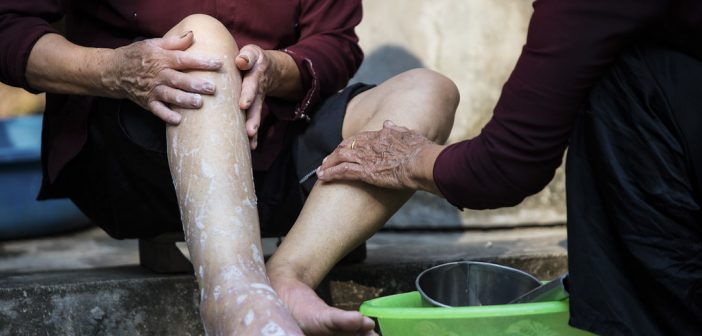Filariasis, also known as lymphatic filariasis, is a neglected tropical disease caused by parasitic worms transmitted through mosquito bites. In several states of India, filariasis poses a significant public health challenge, with millions of individuals at risk of infection. This article explores the prevalence of filariasis in these endemic states, the associated risks, prevention measures, incidence rates, and other pertinent details surrounding this debilitating disease.
Understanding Filariasis in Endemic States of India
Filariasis is caused by the filarial worms Wuchereria bancrofti, Brugia malayi, and Brugia timori, which are transmitted to humans through the bite of infected mosquitoes, primarily from the genera Culex, Anopheles, and Aedes. The parasites reside in the lymphatic system, leading to chronic and debilitating symptoms such as lymphedema, elephantiasis, and hydrocele.
In several states of India, filariasis is endemic, particularly in rural and semi-urban areas where environmental factors conducive to mosquito breeding prevail. The disease disproportionately affects marginalized communities with limited access to healthcare and sanitation facilities, exacerbating the burden of morbidity and disability.
Prevalence and Incidence in Endemic States
According to the World Health Organization (WHO), India accounts for a significant proportion of the global burden of filariasis, with an estimated 40% of the global population at risk of infection. The National Vector Borne Disease Control Programme (NVBDCP) reports that filariasis is endemic in 256 districts across 20 states and union territories in India.
While substantial progress has been made in reducing the prevalence of filariasis through mass drug administration (MDA) campaigns, pockets of high endemicity persist in certain states, posing ongoing challenges for disease control efforts. Additionally, factors such as urbanization, population movement, and environmental changes contribute to the continued transmission of filariasis in these endemic states.
Risks and Complications in Endemic States
Filariasis poses significant risks to affected individuals in endemic states, leading to debilitating complications and long-term disability. Chronic manifestations of the disease, such as lymphedema and elephantiasis, result in physical disfigurement, functional impairment, and psychosocial stigma, thereby impacting individuals’ quality of life and socioeconomic well-being.
Furthermore, secondary bacterial infections of the affected limbs can lead to recurrent episodes of acute inflammation, known as acute dermatolymphangioadenitis (ADLA), further exacerbating morbidity and disability. Hydrocele, characterized by the accumulation of fluid in the scrotum, is another common complication of filariasis, affecting predominantly male individuals in these endemic states.
Prevention and Control Measures in Endemic States
Prevention and control of filariasis in endemic states of India primarily revolve around integrated vector management strategies and MDA campaigns aimed at interrupting transmission and reducing morbidity. Key interventions include:
- Mass Drug Administration (MDA): The NVBDCP conducts annual MDA campaigns in endemic areas of these states, administering antifilarial drugs such as diethylcarbamazine (DEC) and albendazole to eligible individuals to eliminate microfilariae and prevent transmission.
- Vector Control: Environmental management measures, such as source reduction of mosquito breeding sites, larviciding, and insecticide-treated bed nets, are employed to control mosquito vectors and reduce transmission intensity in these states.
- Health Education and Community Engagement: Public awareness campaigns, community mobilization efforts, and health education initiatives are vital for promoting preventive behaviors, encouraging compliance with MDA, and addressing misconceptions and stigma associated with filariasis in these endemic states.
- Case Management and Disability Prevention: Early detection and treatment of filarial symptoms, along with lymphedema management and disability prevention measures, are crucial for improving clinical outcomes and enhancing the quality of life of affected individuals in these states.
Challenges and Future Directions in Endemic States
Despite significant strides in filariasis control efforts, several challenges persist in the endemic states of India. These challenges include:
- Sustained Funding and Political Commitment: Adequate funding and sustained political commitment are essential for sustaining filariasis control efforts in these states, ensuring the continuity of MDA campaigns, and strengthening health systems’ capacity to deliver integrated interventions.
- Operational Challenges: Operational constraints, including logistical issues, supply chain management, and human resource constraints, pose challenges for implementing effective vector control and MDA activities in remote and hard-to-reach areas of these states.
- Epidemiological Heterogeneity: Variations in epidemiological factors, including vector species, transmission dynamics, and environmental determinants, necessitate tailored interventions and surveillance strategies to address the diverse manifestations of filariasis across different geographic regions within these states.
- Health System Strengthening: Strengthening health systems’ capacity to deliver integrated filariasis control interventions, including surveillance, case management, and disability prevention services, is crucial for achieving sustained disease elimination and enhancing health equity in these endemic states.
Towards Filariasis Elimination in Endemic States of India
Filariasis remains a significant public health concern in several states of India, with millions of individuals at risk of infection and debilitating complications. While progress has been made in reducing the prevalence and burden of the disease through integrated control efforts, sustained political commitment, adequate funding, and innovative approaches are essential for overcoming remaining challenges and achieving filariasis elimination goals in these endemic states.
By implementing comprehensive prevention and control measures, strengthening health systems, and addressing the multifaceted determinants of filariasis transmission, India can pave the way towards a future free from the burden of this debilitating neglected tropical disease in its endemic states.






